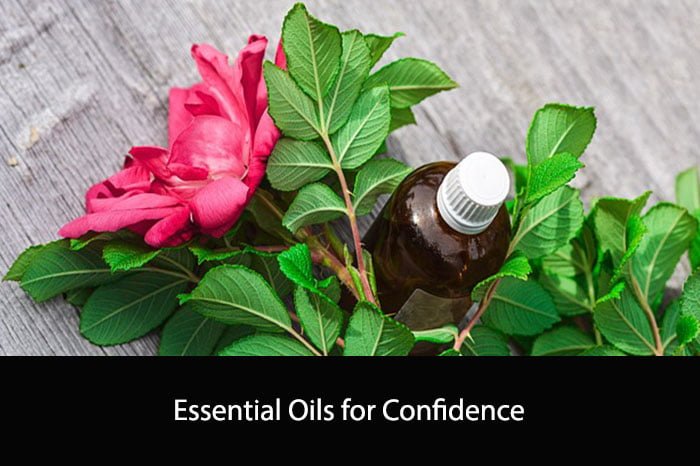Essential oils have been used for centuries to treat a variety of ailments, including skin conditions such as chicken pox. Chicken pox is a highly contagious viral infection that causes an itchy rash and blisters all over the body. While there is no cure for chicken pox, essential oils can help alleviate symptoms and speed up the healing process.
One of the most effective essential oils for chicken pox is tea tree oil. Tea tree oil has powerful antiviral and antibacterial properties that can help fight the virus and prevent secondary infections. It also has a cooling effect on the skin, which can help relieve itching and inflammation. Other essential oils that can be used for chicken pox include lavender, eucalyptus, and chamomile. These oils have soothing properties that can help calm the skin and reduce discomfort.
It’s important to note that essential oils should never be used undiluted on the skin, as they can cause irritation or allergic reactions. They should always be diluted with a carrier oil such as coconut or almond oil before use. In addition, essential oils should not be used on children under the age of two, pregnant women, or individuals with certain medical conditions. As with any natural remedy, it’s important to consult with a healthcare professional before using essential oils for chicken pox.

Understanding Chicken Pox
Chicken pox is a highly contagious viral infection that is caused by the varicella-zoster virus. It is primarily a childhood disease, but adults can also get it if they haven’t had it before. The virus spreads through the air when an infected person coughs or sneezes, or through direct contact with the fluid from the blisters.
The symptoms of chicken pox usually appear within 10 to 21 days after exposure to the virus. The first symptoms are usually a fever, headache, and a general feeling of being unwell. These symptoms are followed by the appearance of a rash, which starts on the face, chest, and back, and then spreads to the rest of the body.
The rash starts as small red spots, which quickly develop into fluid-filled blisters that eventually burst and form a crust. The rash can be very itchy, and scratching the blisters can lead to scarring or infection.
Most people recover from chicken pox within 2 to 3 weeks without any complications. However, some people, especially those with weakened immune systems, can develop more serious complications, such as pneumonia or encephalitis.
To prevent the spread of chicken pox, it is important to keep the infected person isolated until the blisters have crusted over. It is also important to practice good hygiene, such as washing your hands frequently and avoiding close contact with others who are infected.
If you or your child has chicken pox, it is important to stay hydrated and take steps to relieve the symptoms, such as taking over-the-counter pain relievers and using cool compresses to soothe the itching. While there is no cure for chicken pox, there are natural remedies, such as essential oils, that can help relieve the symptoms and speed up the healing process.
Essential Oils: An Overview
Essential oils are natural, aromatic compounds extracted from plants. They have been used for thousands of years for their therapeutic properties. Essential oils are highly concentrated and can be used in a variety of ways, including aromatherapy, topical application, and ingestion.
When it comes to chicken pox, essential oils can be used to help relieve symptoms such as itching and discomfort. Some essential oils have antiviral properties that can help fight the virus that causes chicken pox.
It’s important to note that essential oils should never be used as a substitute for medical treatment. If you or your child has chicken pox, it’s important to consult with a healthcare professional before using any essential oils.
At the same time, essential oils can be a helpful addition to your chicken pox treatment plan. Some of the most commonly used essential oils for chicken pox include:
- Tea tree oil
- Lavender oil
- Eucalyptus oil
- Bergamot oil
- Chamomile oil
Each of these oils has its own unique properties that can help alleviate symptoms of chicken pox. For example, tea tree oil has antiviral and anti-inflammatory properties, while lavender oil is known for its calming and soothing effects.
When using essential oils for chicken pox, it’s important to dilute them properly and use them in moderation. Essential oils are highly concentrated and can be irritating to the skin if used improperly.
Overall, essential oils can be a helpful addition to your chicken pox treatment plan. However, it’s important to use them safely and in conjunction with medical treatment.
Benefits of Essential Oils for Chicken Pox
Chicken pox is a viral infection that causes itchy, blister-like rashes all over the body. While the illness is usually mild, it can be uncomfortable and inconvenient. Fortunately, essential oils can help alleviate some of the symptoms associated with chicken pox. Here are some benefits of using essential oils for chicken pox.
Boosting Immune System
Essential oils such as tea tree, eucalyptus, and lavender have antiviral and antibacterial properties that can help boost the immune system. By inhaling these oils or applying them topically, you can help your body fight off the virus that causes chicken pox.
Relieving Itching
One of the most uncomfortable symptoms of chicken pox is the itching. Essential oils such as peppermint, chamomile, and calendula have anti-inflammatory and soothing properties that can help relieve the itching. Applying these oils topically can provide immediate relief and prevent scratching, which can lead to scarring.
Promoting Skin Healing
Chicken pox can cause scarring if the blisters are scratched or irritated. Essential oils such as frankincense, myrrh, and helichrysum have regenerative properties that can help promote skin healing and reduce the appearance of scars. Applying these oils topically can help speed up the healing process and prevent scarring.
In conclusion, essential oils can be a natural and effective way to alleviate the symptoms of chicken pox. By boosting the immune system, relieving itching, and promoting skin healing, essential oils can help you feel more comfortable and recover more quickly.

Top Essential Oils for Chicken Pox
Lavender Oil
Lavender oil is known for its calming and soothing properties. It can help to reduce itching and irritation caused by chicken pox. The oil is also known to have antiviral properties that can help to fight the virus that causes chicken pox. To use lavender oil, mix a few drops with a carrier oil such as coconut oil and apply it to the affected areas.
Tea Tree Oil
Tea tree oil is a powerful antiviral and antibacterial agent that can help to fight the virus that causes chicken pox. It can also help to reduce inflammation and itching associated with the condition. To use tea tree oil, mix a few drops with a carrier oil and apply it to the affected areas.
Chamomile Oil
Chamomile oil is known for its calming and soothing properties. It can help to reduce itching and irritation caused by chicken pox. The oil is also known to have antiviral properties that can help to fight the virus that causes chicken pox. To use chamomile oil, mix a few drops with a carrier oil and apply it to the affected areas.
Eucalyptus Oil
Eucalyptus oil is known for its antiviral and antibacterial properties. It can help to fight the virus that causes chicken pox and prevent secondary infections. The oil can also help to reduce inflammation and itching associated with the condition. To use eucalyptus oil, mix a few drops with a carrier oil and apply it to the affected areas.
Note: Essential oils should always be diluted with a carrier oil before use. It is also important to perform a patch test before using any essential oil to ensure that you are not allergic to it. If you experience any adverse reactions, discontinue use immediately. Essential oils should not be used as a substitute for medical treatment. If you have any concerns about your condition, please consult with a healthcare professional.
How to Use Essential Oils for Chicken Pox
Topical Application
When using essential oils topically, it is important to dilute them properly with a carrier oil such as coconut or jojoba oil. We recommend a dilution ratio of 1-2 drops of essential oil per teaspoon of carrier oil for adults and 1 drop per teaspoon for children.
To apply, simply mix the essential oil and carrier oil together and gently massage onto the affected area. Be sure to wash your hands thoroughly before and after application to prevent the spread of infection.
Some essential oils that can be used topically for chicken pox include:
- Tea tree oil
- Lavender oil
- Eucalyptus oil
- Peppermint oil
Aromatic Use
Aromatic use of essential oils can be helpful in relieving symptoms of chicken pox such as itching and discomfort. We recommend using a diffuser to disperse the essential oils into the air.
To use, simply add 5-10 drops of essential oil to a diffuser filled with water and turn it on. Be sure to follow the manufacturer’s instructions for your specific diffuser.
Some essential oils that can be used aromatically for chicken pox include:
- Chamomile oil
- Bergamot oil
- Frankincense oil
- Lemon oil
It is important to note that essential oils should not be used as a substitute for medical treatment. If symptoms persist or worsen, please consult a healthcare professional.
Safety Precautions
When using essential oils for chicken pox, it is important to take certain safety precautions to ensure that you are using them correctly and safely. Here are some things to keep in mind:
- Always dilute essential oils before use. Undiluted essential oils can be too strong and may cause skin irritation or other adverse reactions.
- Do a patch test before using any essential oil. Apply a small amount to a small area of skin and wait 24 hours to see if you have any adverse reactions.
- Use essential oils sparingly. A little goes a long way, and using too much can be harmful.
- Keep essential oils out of reach of children and pets. Some essential oils can be toxic if ingested.
- Do not apply essential oils to broken or irritated skin.
- Avoid getting essential oils in your eyes or mucous membranes.
- If you are pregnant, nursing, or have a medical condition, consult with a healthcare provider before using essential oils.
By following these safety precautions, you can use essential oils for chicken pox safely and effectively.
Conclusion
In conclusion, essential oils can be a helpful addition to the treatment of chicken pox. While they should not be used as a replacement for medical treatment, they can provide relief from symptoms such as itching and inflammation.
When using essential oils, it is important to dilute them properly and use them in moderation. Always do a patch test before applying them to larger areas of the skin. Additionally, it is important to choose high-quality essential oils from reputable sources.
Some of the most effective essential oils for chicken pox include tea tree oil, lavender oil, and chamomile oil. These oils have anti-inflammatory and antiviral properties that can help soothe the skin and promote healing.
Overall, essential oils can be a safe and natural way to manage the symptoms of chicken pox. By using them in combination with medical treatment and proper skin care, you can help alleviate discomfort and promote healing.

Frequently Asked Questions
Can salt water help alleviate chicken pox symptoms?
Using salt water can help alleviate chicken pox symptoms. It can help to reduce itching and soothe the skin. To use salt water, mix one tablespoon of salt in a glass of warm water and use a clean cloth to apply it to the affected areas.
How can Melaleuca Oil be used to treat chicken pox?
Melaleuca oil, also known as tea tree oil, can be used to treat chicken pox. It has antiviral and antibacterial properties that can help to reduce itching and inflammation. To use Melaleuca oil, mix a few drops with a carrier oil such as coconut oil and apply it to the affected areas.
Which essential oils are effective in treating chicken pox?
Several essential oils can be effective in treating chicken pox. Some of the most commonly used oils include lavender, chamomile, and eucalyptus. These oils can help to reduce itching and inflammation and promote healing.
What are some natural remedies for chicken pox?
In addition to essential oils, there are several natural remedies that can help to alleviate chicken pox symptoms. These include oatmeal baths, baking soda baths, and applying cool compresses to the affected areas. It is also important to stay hydrated and get plenty of rest.
What is the quickest way to recover from chicken pox?
There is no quick way to recover from chicken pox. It is important to rest and allow your body to fight off the virus. Taking care of your skin and staying hydrated can also help to speed up the healing process.
Are there any home remedies that can help with chicken pox symptoms?
Yes, there are several home remedies that can help with chicken pox symptoms. In addition to essential oils and natural remedies, you can try using calamine lotion, antihistamines, and pain relievers to alleviate itching and discomfort. It is important to talk to your doctor before using any new treatments.





